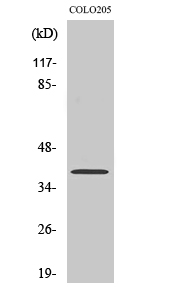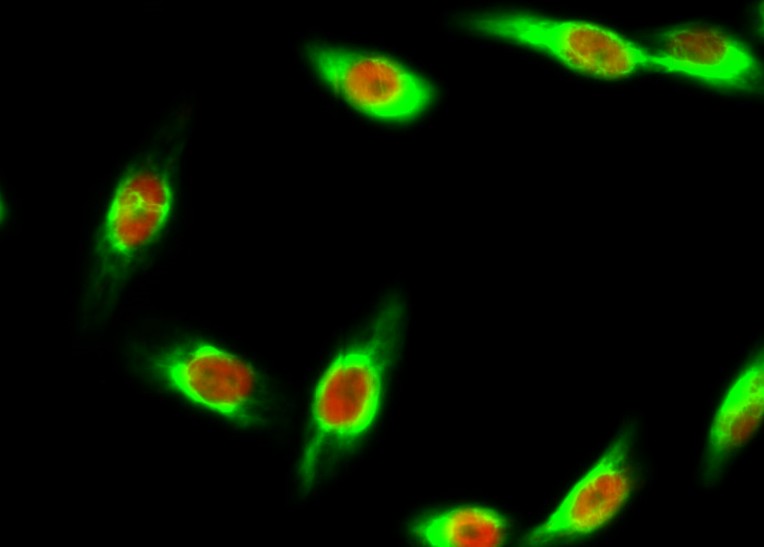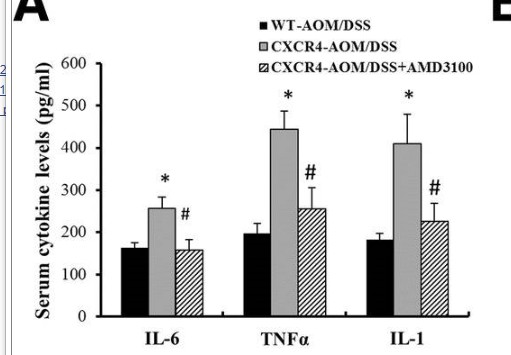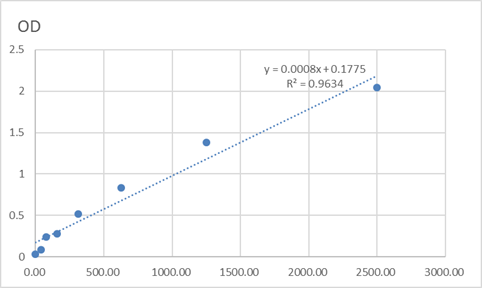
Catalog: KA4328C
Size
Price
Status
Qty.
96well
$330.00
In stock
0
Add to cart


Collected


Collect
Main Information
Reactivity
Human
Applications
ELISA
Conjugate/Modification
Unmodified
Detailed Information
Storage
2-8°C/6 months,Ship by ice bag
Modification
Unmodified
Detection Method
Colorimetric
Related Products
Antigen&Target Information
Gene Name:
XRCC4
show all
Other Name:
DNA repair protein XRCC4 ;
X-ray repair cross-complementing protein 4 ;
X-ray repair cross-complementing protein 4 ;
show all
Background:
function:Involved in DNA non-homologous end joining (NHEJ) required for double-strand break repair and V(D)J recombination. Binds to DNA and to DNA ligase IV (LIG4). The LIG4-XRCC4 complex is responsible for the NHEJ ligation step, and XRCC4 enhances the joining activity of LIG4. Binding of the LIG4-XRCC4 complex to DNA ends is dependent on the assembly of the DNA-dependent protein kinase complex DNA-PK to these DNA ends.,PTM:Monoubiquitinated.,PTM:Phosphorylated by PRKDC. The phosphorylation seems not to be necessary for binding to DNA. Phosphorylation by CK2 promotes interaction with APTX.,PTM:Sumoylation at Lys-210 is required for nuclear localization and recombination efficiency. Has no effect on ubiquitination.,similarity:Belongs to the XRCC4 family.,subunit:Homodimer and homotetramer in solution. The homodimer associates with LIG4, and the LIG4-XRCC4 complex associates in a DNA-dependent manner with the DNA-PK complex formed by the Ku p70/p86 dimer (G22P1/G22P2) and PRKDC. Seems to interact directly with PRKDC but not with the Ku p70/86 dimer. Interacts with XLF/Cernunnos. Interacts with APTX and APLF.,tissue specificity:Widely expressed.,
show all
Function:
non-recombinational repair, in utero embryonic development, cell activation, somatic diversification of immune receptors, somatic recombination of immunoglobulin genes during immune response, somatic diversification of immunoglobulins during immune response, hemopoietic progenitor cell differentiation, adaptive immune response,immune effector process, lymphoid progenitor cell differentiation, pro-B cell differentiation, immunoglobulin production,immunoglobulin production during immune response, production of molecular mediator of immune response, leukocyte mediated immunity, lymphocyte mediated immunity, adaptive immune response based on somatic recombination of immune receptors built from immunoglobulin superfamily domains, immune system development, leukocyte differentiation, somatic diversification of immune receptors via germline recombination within a single locus, DNA metabolic process, DNA ligation, DNA repair, double-strand break repair, double-strand break repair via nonhomologous end joining, DNA recombination, immune response, response to DNA damage stimulus, positive regulation of cell proliferation, response to radiation, response to abiotic stimulus, embryonic development ending in birth or egg hatching, response to X-ray, response to ionizing radiation, response to gamma radiation, positive regulation of cell development, regulation of cell death, DNA integration, viral reproduction, immunoglobulin mediated immune response, somatic cell DNA recombination, somatic diversification of immunoglobulins, somatic recombination of immunoglobulin gene segments, provirus integration, viral infectious cycle, initiation of viral infection, B cell mediated immunity, viral reproductive process, lysogeny, hemopoiesis, lymphocyte differentiation, T cell differentiation, T cell differentiation in the thymus, V(D)J recombination, immunoglobulin V(D)J recombination, cellular response to stress, T cell activation, B cell activation, regulation of cell proliferation, regulation of apoptosis, chordate embryonic development, negative regulation of apoptosis, regulation of programmed cell death, negative regulation of programmed cell death, positive regulation of catalytic activity, regulation of neuron apoptosis, negative regulation of neuron apoptosis, positive regulation of molecular function, isotype switching, leukocyte activation, positive regulation of cell differentiation, lymphocyte activation, regulation of fibroblast proliferation, positive regulation of fibroblast proliferation, hemopoietic or lymphoid organ development, regulation of neurogenesis, positive regulation of neurogenesis, positive regulation of developmental process, DNA ligation during DNA repair, regulation of ligase activity, positive regulation of ligase activity, regulation of nervous system development, regulation of cell development, negative regulation of cell death,
show all
Cellular Localization:
Nucleus . Chromosome . Localizes to site of double-strand breaks. .; [Protein XRCC4, C-terminus]: Cytoplasm . Translocates from the nucleus to the cytoplasm following cleavage by caspase-3 (CASP3). .
show all
Tissue Expression:
show all
Reference Citation({{totalcount}})
Catalog: KA4328C
Size
Price
Status
Qty.
96well
$330.00
In stock
0
Add to cart


Collected


Collect
Recently Viewed Products
Clear allPRODUCTS
CUSTOMIZED
ABOUT US
Toggle night Mode
{{pinfoXq.title || ''}}
Catalog: {{pinfoXq.catalog || ''}}
Filter:
All
{{item.name}}
{{pinfo.title}}
-{{pinfo.catalog}}
Main Information
Target
{{pinfo.target}}
Reactivity
{{pinfo.react}}
Applications
{{pinfo.applicat}}
Conjugate/Modification
{{pinfo.coupling}}/{{pinfo.modific}}
MW (kDa)
{{pinfo.mwcalc}}
Host Species
{{pinfo.hostspec}}
Isotype
{{pinfo.isotype}}
Product {{index}}/{{pcount}}
Prev
Next
{{pvTitle}}
Scroll wheel zooms the picture
{{pvDescr}}




















